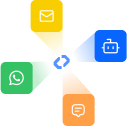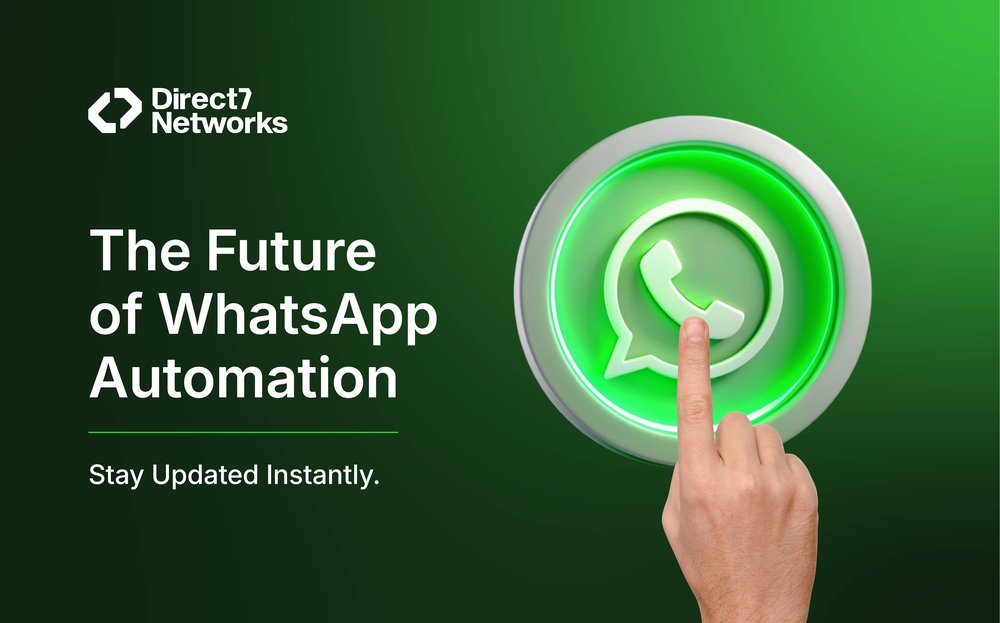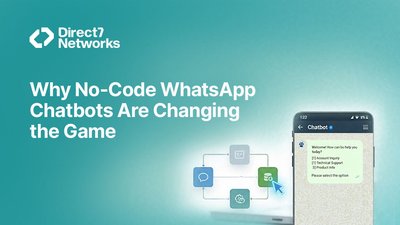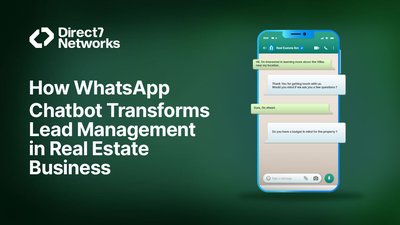WhatsApp is no longer where people message friends — it has quietly evolved into a global business platform. Today, customers expect instant answers, order confirmations, and even purchases to happen directly inside WhatsApp. The next phase of this evolution is about moving beyond simple scripted bots toward intelligent, outcome-driven smart agents — systems that blend:
- Automation,
- Human handoff,
- Payments, and
- Measurable business impact.
This article explores what’s changing, why it matters, and how organizations can prepare for the next generation of WhatsApp-based customer experiences.
What Changed — and Why It Matters
1. From Simple Replies to Rich Conversations
In its early business phase, WhatsApp automation was basic:
- Auto-replies for FAQs,
- Greeting messages,
- Template-based notifications.
While those still serve a purpose, customer expectations have evolved. Today, users want:
- Rich interactions like buttons and product carousels,
- Fast, natural replies that understand intent,
- Task completion inside chat — not redirection to websites or call centers.
2. Two Major Forces Driving the Shift
A. Messaging Itself Has Evolved
Modern WhatsApp now supports:
- Interactive messages
- Quick-reply buttons
- Product carousels and catalogs
- Advanced template structure
These capabilities make WhatsApp feel more like a conversation hub than a static messaging app. Businesses can now design multi-step, interactive flows that mimic natural dialogue.
B. AI and Systems Integration Have Matured
Recent advances in:
- Natural Language Understanding (NLU)
- Retrieval-Augmented Generation (RAG)
- Backend API connectivity (CRM, order, policy systems)
…enable bots to respond intelligently and accurately instead of guessing.
Smart agents can now:
- Pull verified data in real time (e.g., “Your order has shipped”),
- Reference internal policies,
- Understand customer intent and context.
The Bottom Line
Together, these forces have transformed WhatsApp from a one-way notification tool into a complete customer experience platform — where:
- Discovery,
- Support, and
- Commerce happens within a single thread.
Customers get convenience; businesses gain efficiency and measurable ROI.
What the New Generation of Automation Actually Does
The next wave of WhatsApp automation is far more intelligent, context-aware, and outcome-driven than the scripted bots of the past. Here are the six practical capabilities defining the near future of customer communication on WhatsApp:
1. Interactive, Flow-Based Conversations
- What It Means:
Instead of long, typed replies, customers now interact through buttons, lists, and structured choices. - Why It Matters:
- Reduces friction and input errors.
- Speeds up resolution time dramatically.
- Enables conditional flows — for example: If a user requests a refund → the bot displays refund options → hands off to a human if the case is complex.
- Result:
Faster completions, smoother experiences, and happier customers.
2. Smart Grounding (Stop the Guessing)
- What It Means:
Modern AI chat engines pair a language model with a retrieval layer that fetches verified answers from internal systems (e.g., CRM, knowledge base, or order database) before responding. - Why It Matters:
- Prevents “hallucinated” or incorrect answers.
- Keeps replies factual and auditable.
- Improves customer trust and accuracy.
- Example:
Instead of saying, “Your package should arrive soon,” the bot checks the live order feed and replies,
“Your order #8453 is out for delivery and expected today at 4:30 PM.”
3. Seamless Human–AI Handoffs
- What It Means:
Smart systems recognize when to stop automating.When confidence drops or sentiment turns negative, the bot passes control to a human agent with full context. - Handoff Includes:
- Complete conversation history.
- Suggested replies.
- Confidence scores and topic detection.
- Why It Matters:
Customers never have to “start over” or repeat their issue — saving time for both sides.
4. Payments and Commerce Inside Chat
- What It Means:
WhatsApp’s expanding in-chat payments and commerce tools enable end-to-end transactions within the conversation. - Capabilities Include:
- Displaying product cards and carousels.
- Accepting payments directly in WhatsApp.
- Sending invoices and receipts instantly.
- Why It Matters:
Customers can browse, buy, and pay without leaving chat, reducing drop-offs and friction for mobile-first audiences.
5. Better Analytics and Business Logic
- Then: Early chatbots tracked only basic engagement (opens, replies).
- Now: Smart agents measure real business outcomes.
- Advanced Metrics Include:
- Conversion funnels and drop-off rates.
- Revenue per conversation (RPC).
- Escalation and resolution rates.
- Attribution tracking for marketing ROI.
- Why It Matters:
WhatsApp becomes a trackable revenue channel, not just a support tool. Teams can optimize flows, test templates, and connect performance to ROI.
6. Contextual Automation and Personalization
- What It Means:
Smart agents use real-time signals — past purchases, browsing history, cart contents, or loyalty tier — to craft personalized responses. - Why It Matters:
- Makes every message feel relevant and timely.
- Increases conversion rates without adding message volume.
- Builds long-term trust through intelligent engagement.
Summary:
The next generation of WhatsApp automation blends AI intelligence, verified data, personalization, and built-in commerce — transforming the chat from a simple support tool into a revenue-generating, customer-experience engine.
Operational and Commercial Changes You Must Plan For
Implementing WhatsApp automation is not just a technical upgrade — it introduces new operational workflows and governance responsibilities across teams.
These shifts determine whether your automation program scales efficiently or becomes a compliance and cost liability.
Below are the five core areas every organization must address before scaling AI-driven WhatsApp automation:
1. Templates and Compliance
What to Know:
- Proactive business messages (e.g., shipping updates, payment reminders, renewals) must use pre-approved templates.
- Templates need localization for language, tone, and regional compliance.
Operational Actions:
- Plan and submit templates well in advance.
- Keep an organized library of approved vs. pending templates.
- Track expiry and update cycles to prevent delivery failures.
Tip: Build a template calendar by region and use case so compliance reviews don’t bottleneck launches.
2. Consent and Opt-In Management
What to Know:
- WhatsApp requires explicit customer consent before proactive communication.
- Opt-outs must be honored universally — across all connected systems.
Operational Actions:
- Capture how, when, and where consent was obtained (timestamp, source, channel).
- Maintain synchronized suppression lists across your CRM, campaign tool, and WhatsApp API.
- Automate global opt-out syncing to stop sends everywhere instantly.
Tip: Treat consent data as a first-class data object, not a marketing afterthought.
3. Pricing and Financial Planning
What to Know:
- WhatsApp’s pricing is evolving toward per-message or per-conversation models.
- Costs now vary by category (utility, authentication, marketing) and by region.
Operational Actions:
- Model the cost per conversation and compare it with revenue or resolution value.
- Measure revenue per conversation (RPC) and cost per resolution (CPR) to track ROI.
- Adjust budgets as you scale new flows or markets.
Tip: Link financial analytics to message logs — you can’t optimize what you don’t measure.
4. Security and Privacy
What to Know:
- WhatsApp conversations can include sensitive customer data; mishandling it creates a serious risk.
Operational Actions:
- Never send personal or financial details in plaintext.
- Use secure, authenticated links or verified portals for high-risk data.
- Implement access logs to track who viewed or modified customer data.
Tip: Align chatbot data flows with your company’s Data Protection Impact Assessment (DPIA) or equivalent privacy policy.
5. Knowledge Maintenance
What to Know:
- Retrieval-based AI systems are only as good as their knowledge base (KB).
- Outdated or disorganized content leads to wrong answers and lower trust.
Operational Actions:
- Assign content owners for each topic area.
- Version and date every document or FAQ.
- Schedule regular refreshes and retraining cycles.
Tip: Treat your KB like code — version-controlled, reviewed, and audited for accuracy.
Summary:
Success with WhatsApp automation isn’t just about AI — it’s about operational discipline.
Get compliance, consent, finances, privacy, and knowledge maintenance right, and your automation scales reliably. Ignore them, and every new message adds risk.
How to Start and What Future-Ready Looks Like
Moving from small experiments to a scaled WhatsApp automation program doesn’t require complexity — it requires clarity and structure.
Follow this practical, step-by-step roadmap:
Step-by-Step Implementation Path
1. Pick a High-Impact Pilot
Start where success is easy to measure and risk is low.
Ideal pilots include:
- Order tracking (real-time updates)
- Appointment confirmations
- Simple FAQs or return policies
These workflows validate automation value quickly and build internal confidence.
2. Build the Data Pipeline
Integrate your CRM, order management, or scheduling systems so the chatbot can fetch live, accurate data.
This turns scripted flows into real-time, dynamic interactions that customers trust.
3. Design Short, Interactive Flows
Favor buttons, quick-reply menus, and product carousels over free-text inputs.
Interactive UX reduces friction, errors, and dropout rates — especially on mobile.
4. Add Grounding and Safe Fallbacks
- Use retrieval-augmented generation (RAG) to ensure factual answers.
- Route risky or ambiguous queries to humans for review.
- Keep the handoff seamless so customers never repeat themselves.
5. Instrument Outcomes
Track metrics that connect automation to business results:
- Containment rate (resolved without agent)
- Handoff rate
- Revenue per chat (RPC)
- Customer satisfaction (CSAT)
These data points define where automation is working — and where to optimize.
6. Iterate and Expand
Once metrics are strong:
- Extend automation to sales, payments, and proactive outreach.
- Layer in multilingual support and personalized flows for scale.
Think of each successful flow as a reusable building block in a larger customer-experience platform
What “Future-Ready” Looks Like
A mature WhatsApp automation setup no longer looks like one big chatbot. It looks like a modular platform built around:
| Component | Purpose | |
|---|---|---|
| Automated micro-flows | Handle repetitive, structured interactions quickly. | |
| Human-assist layer | Manage complex or sensitive issues with empathy. | |
| Payment rails | Enable secure, in-chat transactions. | |
| Central analytics dashboard | Track performance, ROI, and customer satisfaction in real time. |
Outcome: WhatsApp becomes a core business channel for marketing, commerce, and customer service — all measurable in one place.
What This Change Means for Customers and Teams
For Customers
- Faster, more useful help in the channel they already use daily.
- Fewer handoffs and more accurate replies that save time and effort.
For Businesses
- Reduced support costs through automation.
- Improved conversion and retention via real-time engagement.
- Stronger customer relationships built on immediacy and reliability.
This evolution — from simple bots to intelligent, connected agents — is not about novelty.It’s a strategic shift to meet modern expectations for speed, personalization, and trust.
Final Takeaway
If the goal is to make WhatsApp a true business channel, not just a notification tool. Then now is the moment to invest in smart agents:
Systems that combine automation, human oversight, and measurable impact,
Teams that prioritize data quality, compliance, and seamless human handoffs will lead this transformation, achieving faster service, fewer escalations, and more value per conversation.






